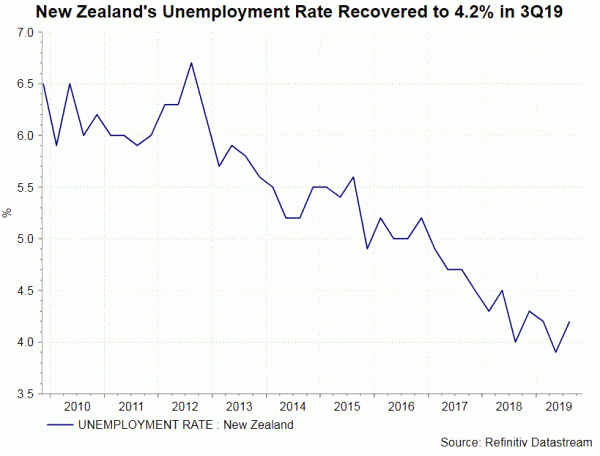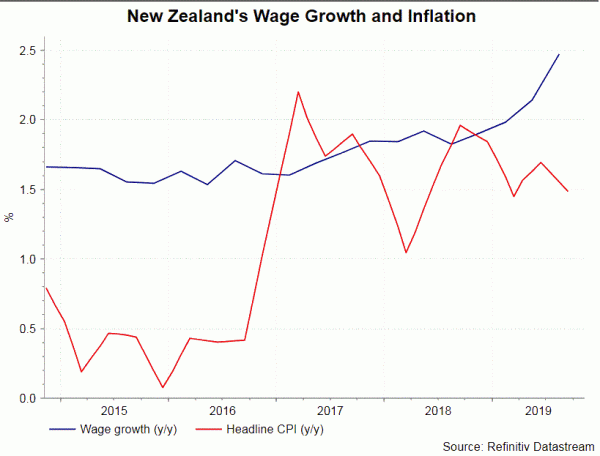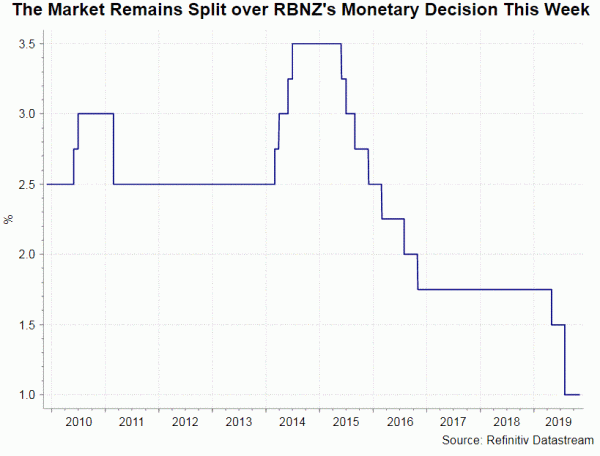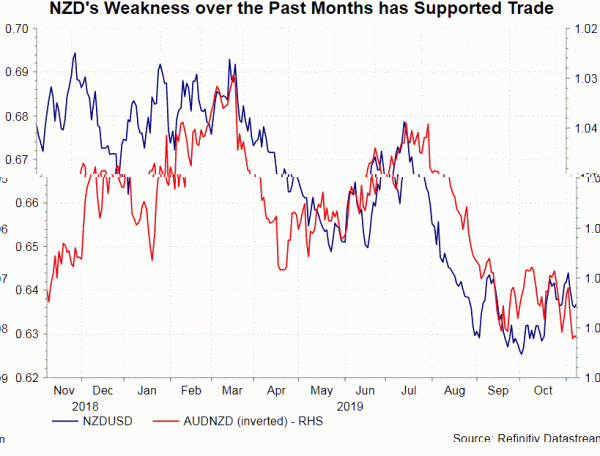The market remains divided over whether RBNZ would lower the OCR this week. Back in August, the market had fully priced in a rate cut of -25 bps. Yet, the central bank surprised with a -50 bps reduction, sending the policy rate to 1%. Currently, the market has priced in 65% chance of a -25 bps cut this week. Although subdued inflation, softening employment situation and weak confidence suggest further easing is warranted, depreciation in NZD and improvement in the housing market might have given the members leeway to stay put for the month. Whether we will see another cut or not later this week, RBNZ will deliver a dovish statement, warning of downside risks of economic growth.
Unemployment rate climbed -0.3 percentage point to 4.2% in 3Q19. This came in higher than consensus of 4.1%. Job growth rate, also missing expectations, decelerated to 0.2% from 0.8% in the second quarter. Separately, the labor cost index rose +0.6% q/q in 3Q19, easing from +0.8% in the prior quarter. From a year ago, the index rose 2.3%, compared with +2.2% in the second quarter. Inflation continued to move further away from the +2% target. Headline CPI moderated to +1.5% y/y in 3Q19, from +1.7% a quarter ago.

 The NZIER business confidence index deepened into the negative territory. A net 35% percent of businesses expect worsening in general economic conditions, the weakest level since March 2009. Moreover, there was a net 11% of businesses reporting demand fell over the quarter brings this measure to its weakest level since September 2010. As noted in the accompanied report, the result suggests “annual GDP growth will ease below 1% later this year”.
The NZIER business confidence index deepened into the negative territory. A net 35% percent of businesses expect worsening in general economic conditions, the weakest level since March 2009. Moreover, there was a net 11% of businesses reporting demand fell over the quarter brings this measure to its weakest level since September 2010. As noted in the accompanied report, the result suggests “annual GDP growth will ease below 1% later this year”.
On a positive note, weakness in NZD could have provided some buffer to the country’s trade. Meanwhile, the country’s housing market has shown signs of improvement. REINZ House Price Index (HPI) showed that housing price gained +3.6% annually. Meanwhile, median house prices across the country gained +6.6% to a record high of NZ$597K in September.
Policymakers have over the past weeks signaled that further easing is possible. Deputy Governor Geoff Bascand noted that “lower rates still may be needed to achieve our inflation and maximum sustainable employment objectives” and the central bank is “undertaking further preparatory work on less conventional monetary policy tools”. Comments made by Assistant Governor Christian Hawkesby were more ambiguous. Speaking at the CBA Global Markets conference in Sydney last month, Hawkesby said the -50 bps rate cut in August was based on analysis by the bank that suggested it should deliver about a 60 basis point stimulus “over the next 12 months”. While some market participants interpreted this as a signal that central bank has done with the August cut, others found this as inconclusive of any future policy decision.
















